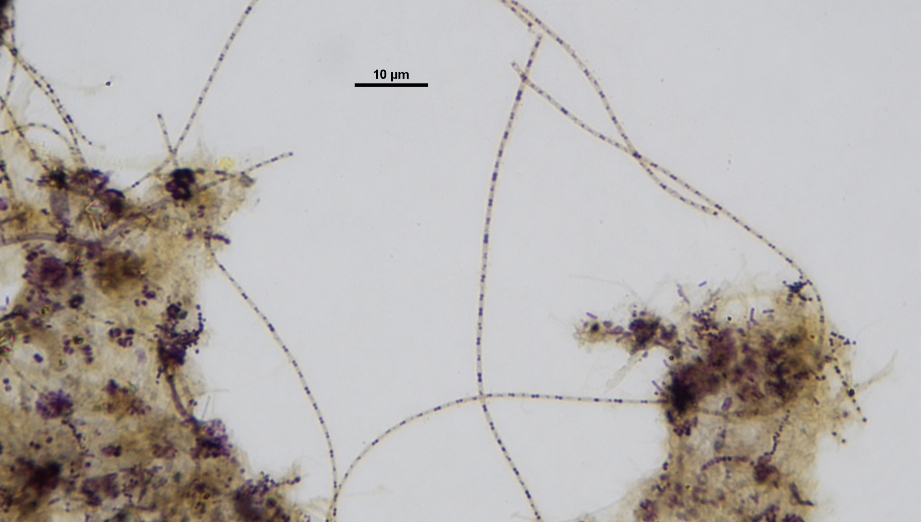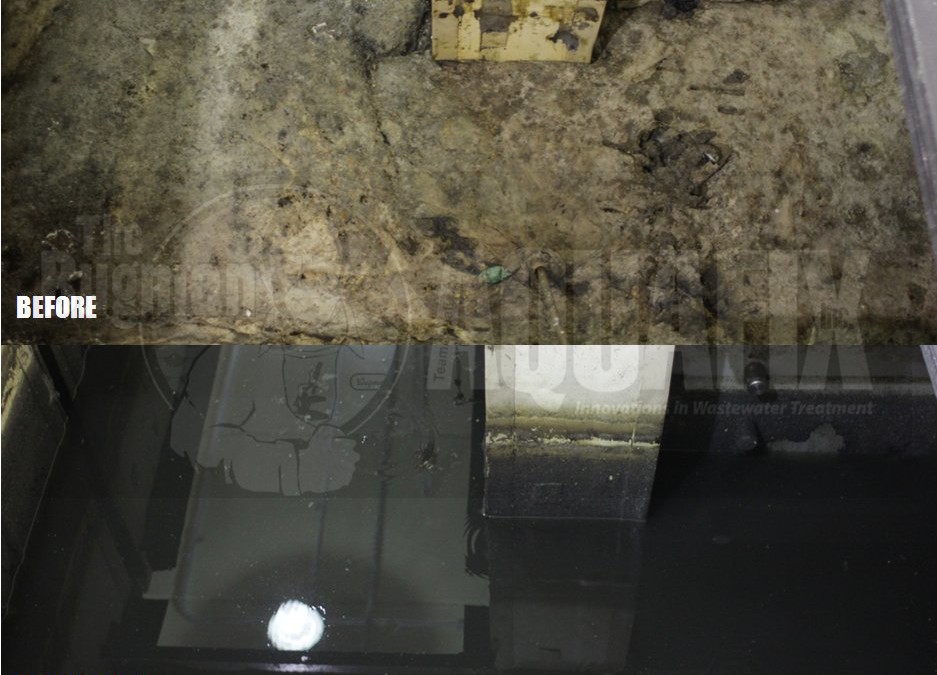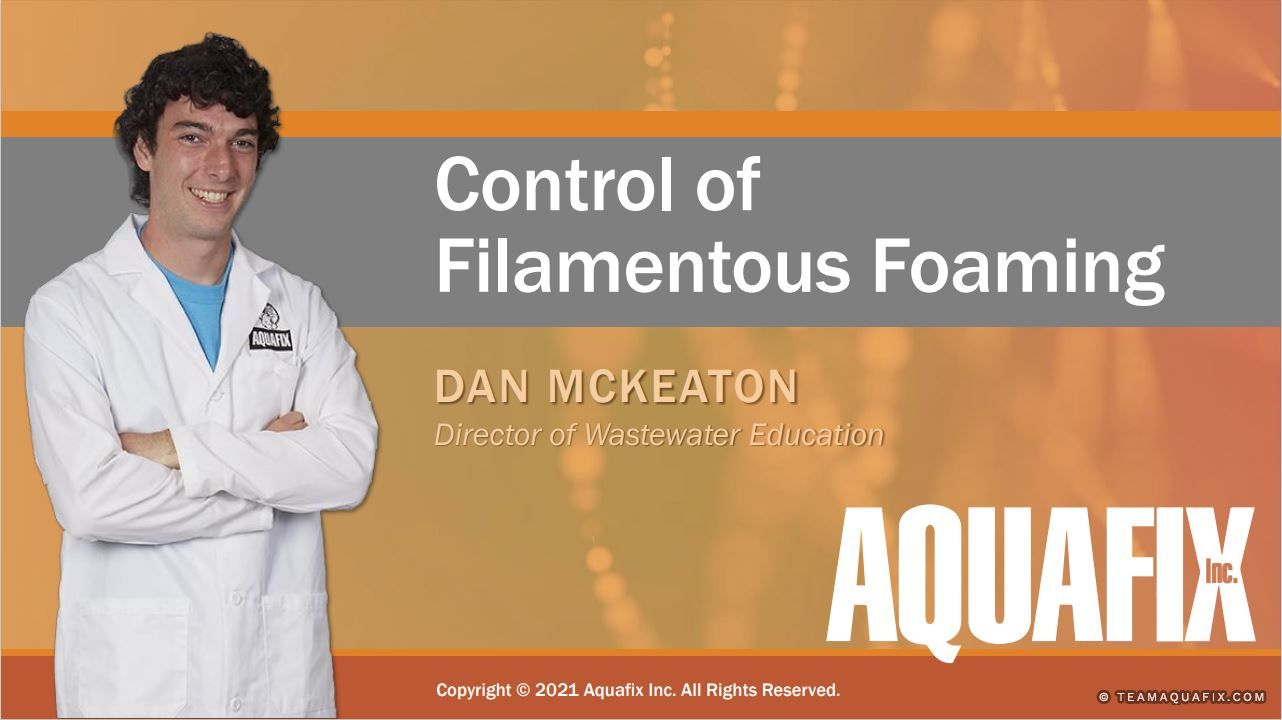

Understanding The Relations between Zoogloea and EPS to Improve Settling
Understanding The Relations between Zoogloea and EPS to Improve Settling Maintaining proper levels of extracellular polymeric substances (EPS) in wastewater treatment plants can play a major role to improve settling. High levels of EPS can easily cause bulking,...
Filament ID and Microanalysis Techniques Webinar
Filament ID and Microanalysis Techniques Webinar by Dalton McGowan and Saylor Gilbert Technical consultant Dalton McGowan and research scientist Saylor Gilbert cover everything you need to know to bring microscopy into your plant’s toolkit! Learn more about how...
All About Essential Nutrients: Nitrogen
All About Essential Nutrients Complete Nitrogen Guide How It Keeps Your Plant Healthy by Saylor Gilbert, Research Scientist Welcome to the first installment of our three-part blog series, where we delve into the relationship between aerobic wastewater treatment and...
Microthrix Bulking In Summer
Microthrix Bulking in Summer by Deborah Lee, Microbiologist Why do we care about Microthrix filaments? Usually, Microthrix parvicella is associated with foaming problems in wastewater treatment. Sometimes we have observed high levels of what looks like M. parvicella...activated-sludge-fm-calculator
Activated Sludge and F:M Ratio Calculator Enhance Your Wastewater Treatment with Our Activated Sludge and F:M Ratio Calculator Managing a wastewater system requires a deep understanding of the intricate balance between food and microorganism ratios (F:M). Utilize our...
2023 Inspiring Woman of Wastewater
2023 Inspiring Woman of Wastewater Taylor Troutman Position: Wastewater Operations Specialist Company: Pennsylvania Municipality Time in the Industry: 5 Years in May “One thing about the wastewater industry that surprised me and continues to surprise me everyday is...
Biocides in Wastewater: Active Biomass Versus MLSS and Impacts on Nitrification
Biocides in Wastewater Active Biomass Versus MLSS and Impacts on Nitrification With colder temperatures coming in, does increasing solids retention really prevent the loss of nitrification? by Dan McKeaton, Director of Wastewater Education As winter approaches, many...Nitrifier Pro Countdown
Unlocking the Future of Wastewater Treatment: Introducing Nitrifier Pro By Kevin Ripp, President and Director of Science and Innovation Day(s) : Hour(s) : Minute(s) : Second(s) Navigating the essential workings of wastewater treatment, from the many microbial...
Types of Wastewater Foaming
Wastewater Foaming Understanding the Three Primary Types and How to Address Themby Saylor Gilbert, Aquafix Research Scientist Foaming is a common problem that many wastewater treatment plants encounter, and it can cause significant issues if not addressed promptly or...
Microanalysis & Filament Origins
Have a problem with toxicity, foaming and filaments? Have a mysterious algae forming or lost nitrification? Have previous wastewater testing that didn’t tell you why issues were occurring?
Aquafix offers three different levels of wastewater testing to provide the right solution. We send out a test kit with everything you need. We’ll ship it there, you just handle the return shipping and lab fee.
*For best results and recommendations, please completely fill out the Sample Analysis Form included in kit.
To discuss test levels and determine what you need, call 888.757.9577.

Ana-Zyme P
Ana-Zyme G is formulated to provide immediate reduction of fat, oil, and grease in anaerobic digestors and lagoons to avoid issues with grease caps and foaming. The biocatalysts in Ana-Zyme G rapidly speed the breakdown of complex fat molecules into simple short-chain fatty acids which then break down to acetic acid, a compound used in methanogenesis.
The goal of this product is to limit volatile acid accumulation, while also increasing biogas generation, and improving volatile solids destruction
Ana-Zyme G can degrade a range of fatty acids such as linolenic, oleic, stearic, and palmitic as well as fish oils, triglycerides, dairy, and egg fat. The production of short-chain fatty acids is very important as part of the acidogenesis–methanogenesis process.

Grease Control in Winter
Winter Grease Cotrol by Aquafix Laboratories Director of Wastewater Education, Dan McKeaton. As cold temperatures close in, we get more and more samples coming in requesting treatment for M. parvicella foaming. But why does this filament seem to thrive in the...
Ana-Zyme P: Impact on Anaerobic Lagoon in Meat Packing Plant
Ana-Zyme P: Anaerobic Lagoon Methane Generation in Meat Packing Plant by Justin Hall, Project Specialist, University of Wisconsin-Stevens Point Summary Wisconsin Institute for Sustainable Technology at UW Stevens Point conducted a study to evaluate impacts of Ana-Zyme...
Webinar: Nocardia and Microthrix – Key Drivers and Control
In this webinar, Aquafixt Director of Wastewater Education, Dan Mckeaton will cover how to overcome filaments by building good bacteria. For additional information or questions, please contact us at 888-757-9577 or training@teamaquafix.com. Timeline: 1:26 Overview...
Ana-Zyme G
Ana-Zyme G is formulated to provide immediate reduction of fat, oil, and grease in anaerobic digestors and lagoons to avoid issues with grease caps and foaming. The biocatalysts in Ana-Zyme G rapidly speed the breakdown of complex fat molecules into simple short-chain fatty acids which then break down to acetic acid, a compound used in methanogenesis.
The goal of this product is to limit volatile acid accumulation, while also increasing biogas generation, and improving volatile solids destruction
Ana-Zyme G can degrade a range of fatty acids such as linolenic, oleic, stearic, and palmitic as well as fish oils, triglycerides, dairy, and egg fat. The production of short-chain fatty acids is very important as part of the acidogenesis–methanogenesis process.
